Introduction
Today, the world’s natural resources are under increasing pressure due to an overgrowing world population, estimated at ≈ 9.5 billion people at around 2050. It seems our planet is in protracted crises with tremendous problems due to the “laisser faire” politics of previous generations. In order to prevent scarcity of essential “economic goods” for global human mankind like, energy, food and water our green biomass production at planet Earth has according to the FAO to grow with 70% in order to avoid a tremendous catastrophe for humanity. Intergovernmental organizations like UN, FAO (2005), Worldbank, WHO and (governmental)institutions like the “Think-Tank” comprehensive study directed by The Government Office for Science, London published in 2011 “”The “Foresight study: The Future of Food and Farming, challenges and choices for global sustainability” by Professor Sir John Beddington and co-workers. These organizations are struggling with “The Global Ten Billion People Issue”, at the midst of the 21st century and they at the end can solely give a future projection and conclusion that we need to produce 70% more green biomass amounting 70 x 1012 kg of carbon per year. So what has been performed by these “Think- Tank-organizations”:
Describe the present alarming situation without solutions
a). Describe the limits of the present terrestrial agricultural practices, still in energy equivalents like by the FAO noble strived energy target of ≈2800 (empty!) kcal/caput/day.
b). The WHO has a more from metabolic and nutritional perception more profound tapestry of nutritional insights related to health and lifestyle patterns and clearly stipulates that the quality of the food and a healthy population are directly interrelated. This [commentary] will be a compelling and urgent attempt to convince policy makers and a whole range of professionals and researchers whose interest relate to all aspects of the global food system that the nexus: energy=> healthy food=>medical costs are interrelated and so are ultimately their cash-flows!!!
c). Input from Academics remains traditional and within their research area without a scope and perception “across research areas”. While the last decades of the 20th Century Medical Systems Biology was –and is stillactively transforming the field of modern health care from symptom-based disease diagnosis and treatment to precision medicine in which patients are treated based on their individual characteristics. Development of highthroughput technologies and application of personalized medicine paradigms aims to achieve the right diagnosis and right treatment for the right patient at the right time at the right cost. With the potential to transform medical practice across global communities, personalized medicine is emerging as the flagship of modern medicine. But what has the “Medical Systems Biology” era the major part of the world population in the developing countries delivered? The International Diabetes Federation (IDF) with global epidemiological approach to combat the pandemics of Type-2 diabetes still uses in the field situation a traditional “fructosamine-test” and none of the during three decades of Medical Systems Biology no fancy (in most cases biochemical not understood) biomarker. Clearly the world is dispersed into the “Hunger-Obesity” paradox. While two billion of people are malnourished, one billion are starving a cruel hunger death medical society remains to say it reflecting to the hunter-gatherer societies with their cycling food patterns of “Feast vs. Famine “. To illustrate my statement about a dispersed world of “Feast vs. Famine” or “Hunger vs. Obesity” and to pursue my comparison in economic terms: to feed the World Population of 7 billion people for one year cost around 800 billion US$ while in 2012 solely one country (the US) spend nearly its whole GDP (16 trillion US$), an estimated 15 trillion US$ at medical expenses related to obesity and its burden of Chronic Degenerative Welfare Diseases (CDs).
Evaluate in historical perspective the “wrong” choices of our nowadays failing terrestrial agricultural system.
This has only been performed by the earlier mentioned “Think- Tanks” from the moment of the “Green Revolution”, so the post War-II era and its food policies. Coming back to the required timeframe of evaluation of our present terrestrial agricultural system, even in one of the most critical reviews of David Tilman and co-workers published in Nature 2002 and entitled "Agricultural sustainability and intensive production practices", they restricted themselves to "Green Revolution" era. Better perception would be to evaluate our nowadays terrestrial agricultural system over its whole time frame of existence ≈ 10,000 years ago. Applying this approach in this editorial it can easily be summarized by:
a). It is to major extent based on fresh water for which the resources on planet Earth are solely restricted to ≈2 %;
b). The present agricultural system is too dependent on fossil energy prices which make it conceivable to price fluctuations “bubble-effects”, and collapse.
c). While solar energy is free and abundant (see further) a developed agricultural system which is dependent on economic valuable market prices of fossil energy is also easily to manipulate on the stock exchange markets, and food prices can be driven up by (unethical) strategies manipulation in arable area by speculating in [demand]/ [supply] ratio’s.
Lacking of creative and smart innovative solutions leads to a climate of negative future perception.
Solely, mentioning a problem “The Global Ten Billion People Issue around A.D. 2050” and describing and evaluating of a problem by critically evaluating non-targeted solutions (≈options), will lead to a climate of confusion and disaffection in the population, at national but also at global level. Societal consequences are huge resulting in a climate of low tolerance and xenophobia–even in the developed world. Think about the political problem of the refugees from African countries or nowadays from Syrian refugees towards Europe. And this is not a political climate of positivism, populistic nationalistic parties arise, and aspire and meet challenges for the future imposed by law are collectively neglected. Although of good willingness we have to confess no policymakers (even from the “green” environmental political parties) are conceivable for the problems humanity has to face next decades or even at the end of the 21st century. Like a looming, energy-, (Figure 1) phosphate-, fresh water-, proper antibiotics- crises, combined with global Earth warming, and ocean acidification. Limitations of the mentioned organizations are hesitant to propagate one solution which can be picked up at all levels of society, massively and collectively. They solely restrict themselves towards the rough data depicted in Table 1, restrict themselves to limited changes which they call “challenges for the future”. But smart innovative solutions as projections from on a global scale acknowledged “Think-tank” Institutions, can at present not give the comfort to policymakers and other communities of interest to give a global futuristic perception for the 21st century with its “Global Ten Billion People Issue” as incomprehensible “hallmark” for humanity and coming generations.
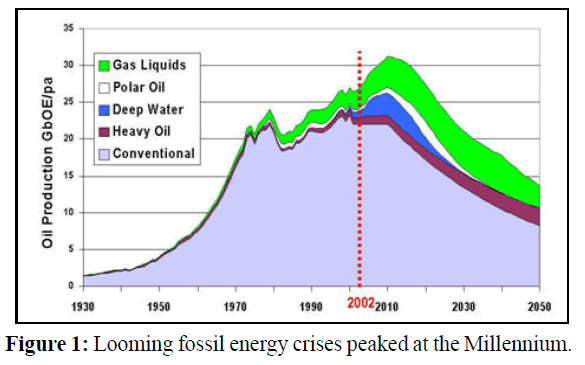
Figure 1: Looming fossil energy crises peaked at the Millennium.

Table 1 Future scenario for human mankind with its already failing terrestrial agriculture food producing system.
Outline of this [Commentary] is one solution “Towards a Seaweed Based Economy”, in order to produce the required 70% of green biomass in three decades with spin off towards all parts of society in this way meeting the eight Millennium goals.
This manuscript describes the nowadays perspectives for the 21st century where a seaweed based economy can assist the failing terrestrial agricultural food production system. Thereafter the prior described global status of our planet and the nutritional and health status of its inhabitants are major research issues of the Blue-Green technology foundation (www.bluegreentechnologies. nl). Notice that there is overall a close relation between energy, food, nutritional quality and health in our human society. At present -the 21st century- the world is in a protracted crises and human mankind have to dissolve a variety of numerous problems in order to survive as a species. Never before human mankind has on a global scale according to Darwinian thought of “the struggle for survival” been under such negative selective pressure as a species. To mention briefly, at present our global Food- & Energy production systems completely fails for the following reasons and constraints:
a). It is fossil energy driven and environmentally unfriendly, which most people are aware of and most easy available oil and gas reserves will be depleted the next 20-50 years. At present world-leaders are choosing according to the International Energy Agency (IEA) for a third great carbon era. By a worldwide cumulative investment of around US $22.87 between 2012 and 2035, "The Age of Unconventional Oil and Gas" or a third Carbon driven era will be started. In such a world, global carbon emissions will soar far beyond our current worst-case assumption i.e. diminished food production. Our few wilderness areas will be eviscerated and planet Earth will become a harsher and blistering planet. Another more prosperous perspective would according to our foundation be, that the world leaders are assuring us that increased reliance on “clean” natural gas combined with expanded investments in wind and solar power -including a seaweed based economy (see further)- is a better alternative. This scenario will permit humanity the 21st century a smooth transition to a green energy future in which humanity will no longer be pouring carbon dioxide and other greenhouse gases into the atmosphere resulting in “global Earth warming” and “ocean acidification”. This demands an integral international effort to implement innovative energy-smart solutions which are cost effective and also reach the remote areas of our planet, where primarily the underdeveloped countries are located and unfettered growth of the world population will take place. As mentioned earlier our foundation is strongly supportive for a seaweed based economy which is ecological balanced, environmental sustainable and can assist the present failing terrestrial agricultural system which has the two following major constraints:
i). It relies totally on the around 2% freshwater our planet stores.
ii) It is important to notice that during the “Green Revolution” terrestrial agricultural system was and still is extremely dependent on energy input and the prices of food production are directly linked to these of fossil energy. This is easily to clarify because prices of input factors in terrestrial agriculture (producing irrigation water & fertilizer, heating of green houses, transport costs, cooling storage costs, food production costs etc.) all require energy so during the “Green Revolution”, there was a close correlation between fossil energy prices and these of food (Figure 2).
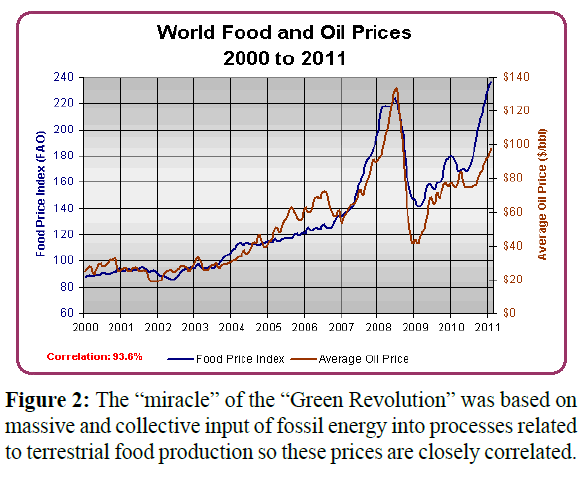
Figure 2: The “miracle” of the “Green Revolution” was based on massive and collective input of fossil energy into processes related to terrestrial food production so these prices are closely correlated.
b). The World population started after WO-II with an unfettered population growth due to the fossil energy driven “Greenrevolution” by a tremendous expansion of our agricultural production. As a consequence UN predictions estimate that around A.D. 2050 around 9.4 billion people will live at our planet (Figure 3).
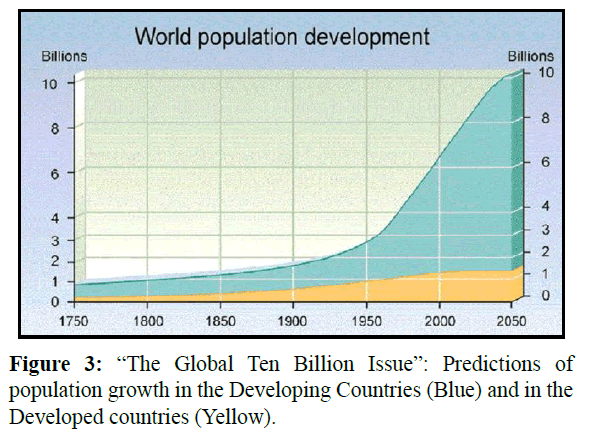
Figure 3: “The Global Ten Billion Issue”: Predictions of population growth in the Developing Countries (Blue) and in the Developed countries (Yellow).
c). Failing terrestrial agricultural system: Human food production system is at a crossroads all for at least three decades since the “Green revolution” cannot keep in pace with the tremendous growth of the world population. Although on a global scale the total amount of food expressed in energy units is at an affordable level of 2790 kcal/caput/day, at this moment the depth of hunger expresses our global failing terrestrial food production system simply by mentioning the facts that of our global population of ≈seven billion people. The parameter "Depth of Hunger" exemplifies that around one billion people are starving with a diet < 200 kcal/caput/day. Secondly, between one and two billion are undernourished which refers to the condition of people whose dietary energy consumption is continuously below a minimum dietary energy requirement for maintaining a healthy life and carrying out a light physical activity. Thirdly, strange enough ≈one billion are obese (BMI range 30- 40) which emphasizes that at present on a global scale there is enough food available to feed the world but large disparities in the distribution of food obstruct the fight against hunger. So on a Global scale there is a clear Hunger-Obesity paradox (Figure 4).
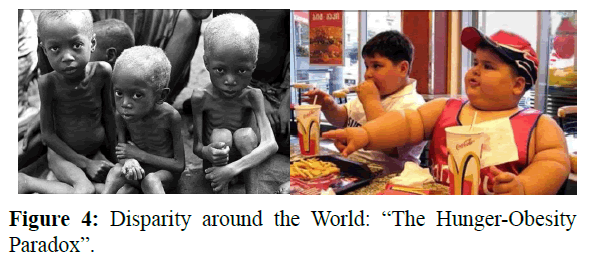
Figure 4: Disparity around the World: “The Hunger-Obesity Paradox”.
Four reasons stipulate our terrestrial agricultural area has to expand tremendously the 21st century:
a): Firstly, global human population is rapidly increasing, especially since the second half of the 20th century and predictions made by the United Nations estimate that ≈ 9.2 billion people will live on our planet in 2050.
b): Secondly, this growing world population has an increasing demand for wealthy –economically more costly mainly veterinary production like dairy products, eggs and meat. It is estimated that by 2050 food production must increase by 70% in order to meet the demand of a growing world population, rising incomes and the urbanization that is occurring around the world, particularly in developing countries. A required substantial increase of global food production of 70 percent by 2050 would require an additional quantity of nearly 1 billion ton of cereals and 200 million tons of meat.
c): A third reasoning is that the potential agricultural area has been shrinking already with 7% of the world’s land area because soils are affected by salt.
d): Also climate change tremendously decreases our food production e.g. in Sub-Saharan countries such as Sudan and Senegal, rising temperatures could cause up to a 50% reduction in yields.
Our present and future agricultural challenges and demands:
These are outlined in Table 1. It can be concluded that the major causative factor in order to meet our present and the near future food production needs or its resources are at first global fresh water (expressed in water stressed countries), followed by the demands for fertilizers (N & P). So fresh water becomes a vulnerable production factor and the same for our fertilizers (N & mainly P). For these reasons arable area and fresh water is becoming a scarce commodity very rapidly (see Table 1). The challenges we have to address in amble three-four decades are clearly defined by the arithmetical experts of the FAO and WHO and given in Table 1.
Primary production Seaweed Communities (Figure 5):
The efficiency of the photosynthetic process of a terrestrial crop or seaweed from the oceans is ultimately a reflection of the growth which ultimately determines the amount of green biomass which can be harvested. Seaweeds “the unforeseen crop of the future” and other marine plants are the primary producers in the marine environment. They form the standing crop and determine the productivity of all communities. Seaweed-based ecosystems are amongst the most productive on Earth. This is illustrated in Table 2. Reminding the compelling FAO predictions our food production/green biomass has to grow with 70% in order to provide around ten billion people at the midst of the 21st century with their primary elementary needs (food, energy, water, shelter, medicine), this can be accomplished using the seaweeds (most rapid growing primary producer; see (Table 2). (Figure 6)
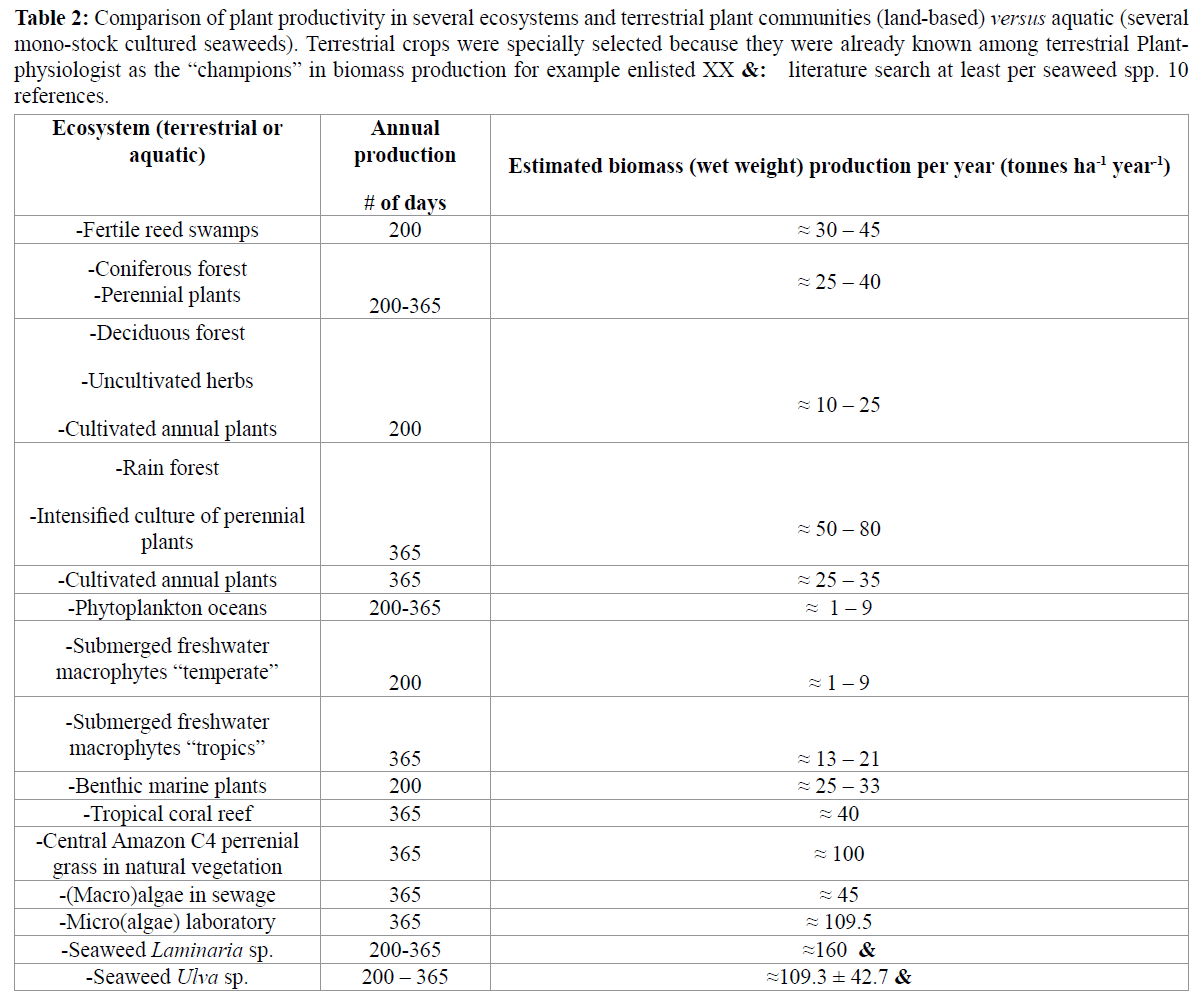
Table 2: Comparison of plant productivity in several ecosystems and terrestrial plant communities (land-based) versus aquatic (several mono-stock cultured seaweeds). Terrestrial crops were specially selected because they were already known among terrestrial Plantphysiologist as the “champions” in biomass production for example enlisted XX &: literature search at least per seaweed spp. 10 references.
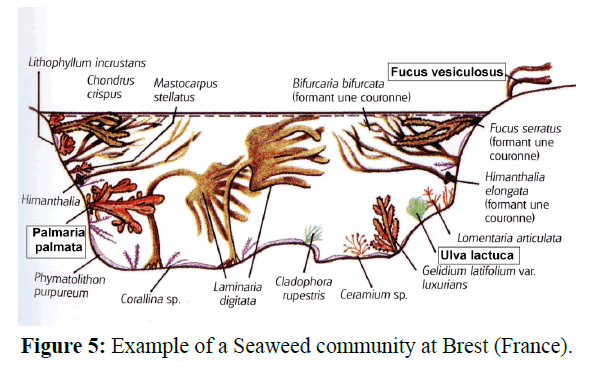
Figure 5: Example of a Seaweed community at Brest (France).
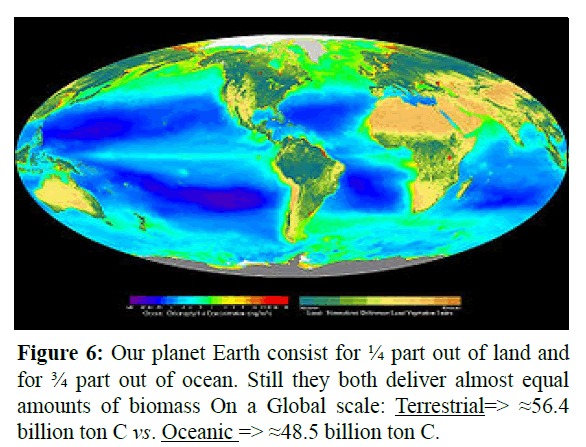
Figure 6: Our planet Earth consist for ¼ part out of land and for ¾ part out of ocean. Still they both deliver almost equal amounts of biomass On a Global scale: Terrestrial=> ≈56.4 billion ton C vs. Oceanic => ≈48.5 billion ton C.
Photosynthesis at planet Earth
Is not only directs to the "flux" of solar energy into Earths ecosystems via the food chain (Figure 6), but it also implies temporarily fixation as carbon in all organic compounds within organisms' bodies. In ecological terms speaking a “food-chain pyramid”. In all, photosynthetic organisms convert around 100- 115 petagrams (peta≈1015) of carbon (C) into biomass per year. Based on the assumption that our primary production as green biomass has to grow with around 70% for the ≈9.2 billion people at the midst of the 21st century, 80 petagrams (peta≈1015) of seaweed carbon needs to be produced. At present it is estimated (see b:) that around 2.55 x 106 t C-1 seaweed is produced so with our staggering terrestrial food production system the required by the FAO dictated 70% increase of primary production has to come from the seaweeds. Overall, the rate of energy capture by photosynthesis – conversion of carbondioxide using solar energy directly into Life (primary production) or indirectly into food is immense, approximately 100 terawatts (tera ≈1012 watts). Roughly it is estimated that the conversion of solar energy which reaches our globe is converted via primary production in green biomass and energy at an efficiency of ≈ 7 % by mainly:
a). Phytoplankton with a world production of around > 30 x 106 t C-1;
b). The recently rediscovered and stipulated “unforeseen crop of the future”: the seaweeds. On a global scale around accounting for their patchy distribution a world production of around 2.55 x 106 t C-1 of mainly Kelp species (Figure 7).
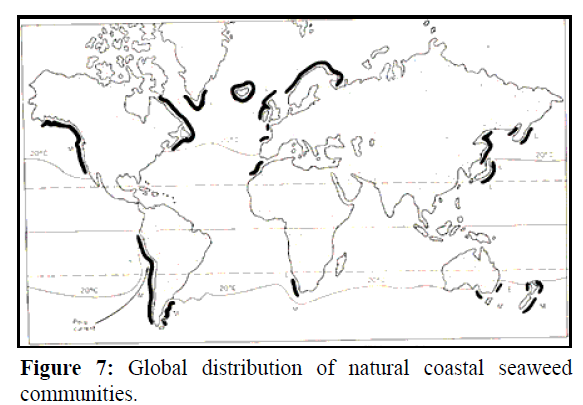
Figure 7: Global distribution of natural coastal seaweed communities.
c). “Common” terrestrial C3 & C4 crops. Around ¾ of our globe is ocean, which emphasizes the urgently need to have reliable primary production data of the terrestrial as well as the oceanic primary production processes. Our planet Earth consists for ¼ part out of land and for ¾ part out of ocean. Still they both deliver almost equal amounts of biomass=> on a Global scale: Terrestrial: ≈56.4 billion ton C; Oceanic: ≈48.5 billion ton C (Figure 6: together: Terrestrial & Oceanic ≈105 billion ton C on a global scale –with ≈7 billion inhabitants- with a mean 7% photosynthetic efficiency of all primary producers=> so one % photosynthetic efficiency by primary producers fixes Carbon for one billion people.
Traditional Aquaculture systems
At present with annual growth rates of the aquaculture industry of ≈10% it is at present the fastest growing agricultural sector and the global demand (“appetite”) for farmed fish (fishmeal & fishoil) is putting unsustainable strain on the world’s food resources. Situation can be improved by an increased production of “cheap” herbivorous fish which are lower on the food chain and can be raised on plant-based feeds. Another option would be raising filter feeders like shellfish which don’t have to be fed at all living on waste products of the finfish and require two to three times less energy per unit of edible protein produced than most forms of livestock rearing.
Ecological engineering via a MultiTrophic Aquacultural (IMTA)-approach
This is relevant as offshore culture and is only possible in many (protected) areas if the absence of negative environmental impacts can be demonstrated. Therefore the IMTA approach is on a global scale needed as it provides a tool for ecosystem based management of discharges from aquaculture (Figure 8). Considering the very low energy input value of a seaweed production system of only 1 to produce edible protein is striking and is the lowest off all mentioned global production systems (including the production of terrestrial plants which require 2-4 times more energy input in comparison to a solely seaweed production based aquaculture system! With the new generation of ecological engineering via IMTA it should be possible to (1) maximize nutrient retention in open system culture, (2) use low amounts of fish meal & fish oil in fish feed, (3) produce high quality products, and (4) develop a commercially feasible concept for large scale sustainable marine aquaculture production. In conclusion, an Integrated MultiTrophic Aquacultural (IMTA)-approach based on the combination culture of fish, bivalves and seaweeds seems overall for all mentioned production systems to be the most profitable as a “Future Scenario” for the most efficient, ecological balanced, sustainable agricultural production system, possibly globally applied (Figure 8).
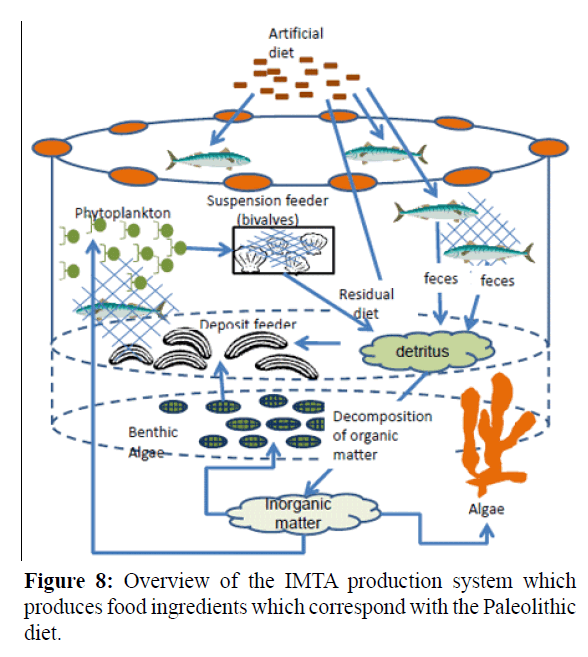
Figure 8: Overview of the IMTA production system which produces food ingredients which correspond with the Paleolithic diet.
“Towards a Seaweed based Economy”
Despite the variety of life forms and the thousands of seaweed species described, seaweed aquaculture is presently based in a relatively small group of about 100 taxa. Of these, five genera (Laminaria, Undaria, Porphyra, Eucheuma/Kappaphycus, and Gracilaria) account for about 98% of world seaweed production mainly in China amounting 10 250 606 metric ton [note: one MT = 1,016 (kg) ≈1000 (kg)], of these 5 major most important seaweed species according to FAOSTAT 2014. So in quantity the Chinese seaweed industry amounts ≈10.25 billion kg of seaweed or green biomass/dry matter/annum. During the last 50 years, approximately 100 seaweed taxa have been tested in field farms, but only a dozen are being commercially cultivated today with world-leader China.
Development Chinese Seaweed Industry
The Chinese seaweed industry started booming after World War-II by just empirical selecting a number of specific seaweed species from neighboring Asian countries and based on a “trial and error” approach, sporulation techniques, producing germlings and seedlings were manifested including marine culture techniques and management and harvesting and processing techniques; all region implemented. At present the Chinese government distinguished four aquatic seaweed regions (see Figure 9). The first region is the Yellow Sea & Bo Hai which includes Shandong province, Liaoning province, Hebei province and Tianjin municipality. This region has the largest output of seaweed products in China and mainly Laminaria and Undaria are produced. Yangzi River Delta is the second region which includes Jiangsu province, Shanghai municipality and Zhejiang province. In this area the main aquatic seaweed product is Porphyra. The third region is Taiwan province and Fujian province which mainly produce Laminaria and Porphyra. The fourth region is the South of China which include Guangdong province, Guangxi Province and Hainan Province which mainly produce Laminaria and Porphyra. The south of China is not very suitable for seaweed cultivation due to the high temperature of seawater. However, the improvement of cultivation technology makes seaweed industry also possible in the South of China nowadays. (Figure 9).
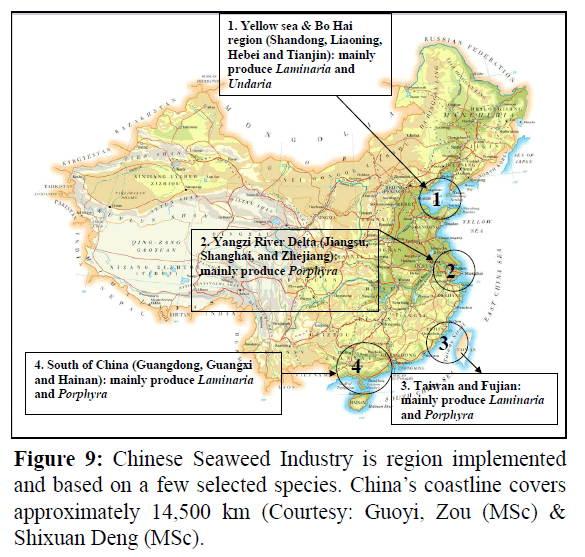
Figure 9: Chinese Seaweed Industry is region implemented and based on a few selected species. China’s coastline covers approximately 14,500 km (Courtesy: Guoyi, Zou (MSc) & Shixuan Deng (MSc).
State of the art Seaweed culture
A brief introduction to life cycles and cultivation techniques of these species will be presented in a follow up review. More recently, seaweeds have become important as alternative green biomass source in order to produce energy by anaerobic methane fermentation (Gracilaria, Ulva, Laminaria) including serving as a sink for anthropogenic produced CO2 in this way combating “Global Warming” and “Ocean Acidification”. While offshore IMTA is reasonably well studied and perfected the study of seaweed communities is in its infancy at the level of the ecosystem (Figure 10).
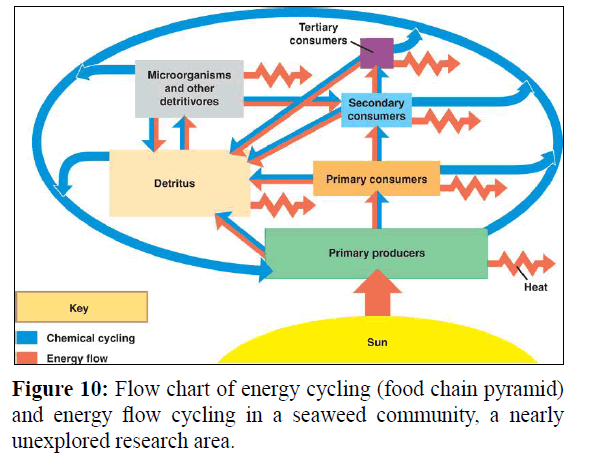
Figure 10: Flow chart of energy cycling (food chain pyramid) and energy flow cycling in a seaweed community, a nearly unexplored research area.
The Blue Green Technologies Foundation (www.bluegreentechnologies.nl)
We strongly believe in a “Seaweed based Economy”, and increased primary production in order to create the amount of the 70% increase of green biomass as the FAO calculated when “the global ten billion people issue” at the midst of the 21st century has to be dissolved with ample three decades to go!! Starting with the basis of green biomass production=> solar irradiance at planet Earth in an oceanic seaweed community (see figure 4). Luckily, the large magnitude of solar energy available makes it a highly appealing source of electricity. The United Nations Development Program in its A.D. 2000 “World Energy Assessment” found that the annual potential of solar energy was in the range of 1,575– 49,387 exajoules (EJ) (1018 Joules). So with a total world energy consumption -which was ≈560 EJ in 2012- the annual solar irradiated energy is between ≈2.8 towards ≈88.2 the amounts of the Earthly human civilization needs. In 2011, the “International Energy Agency” said that "the development of affordable, inexhaustible and clean solar energy technologies will have huge longer-term benefits. It will increase countries’ energy security through reliance on an indigenous, inexhaustible and mostly import-independent resource, enhance sustainability, reduce pollution, lower the costs of mitigating global warming, and keep fossil fuel prices lower than otherwise. These advantages are on a global scale. Hence the additional costs of the incentives for early deployment should be considered learning investments; they must be wisely spent and need to be widely shared". A “Seaweed Based Economy”, meets this statement in full extent:
a). It requires low technological input;
b). Can be developed in the remote areas of our planet –where the poorest of the poorest people live. These remote areas are mainly tropical deserts with solely the whole year Maximal Solar Irradiance energy (≈2800 μmol/m2/sec);
c). Another input factor: nutrients are in our eutrophic oceanic water abundantly available;
d). Suitable high temperature tolerant tropical seaweed strains already exist or have to be developed by protoplast fusion techniques. According to prof. Cheney protoplast fusion was already successfully applied on a cold water commercial agar producing Gracilaria strain resulting in a tropical strain for agar production in the tropical oceans. The tremendous amount of useful seaweed products (fertilizer, green biomass for energy, protein, PUFAs, antibiotics, fucoids (fucane), fucoxanthin, laminaran, kainic acid, heparin, and other sulphated oligo- and polysaccharides like carrageenen and alginates but also antibiotics, herbicides, anti-cancer medicins, antioxidants like caretonoids etc), might lay the fundament for economic development in these poorest countries on planet Earth meeting all eight millennium goals (Figure 11).
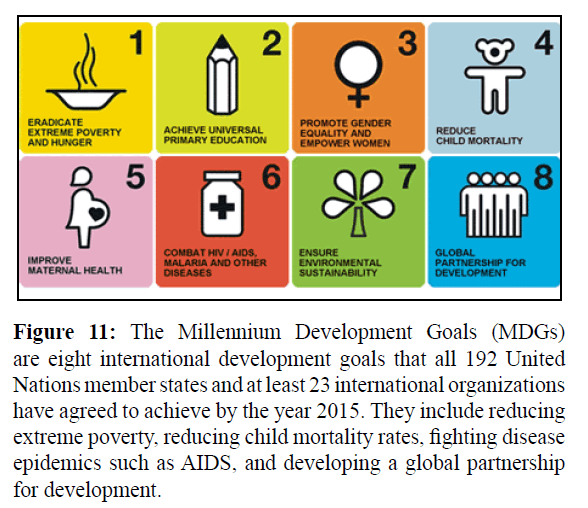
Figure 11: The Millennium Development Goals (MDGs) are eight international development goals that all 192 United Nations member states and at least 23 international organizations have agreed to achieve by the year 2015. They include reducing extreme poverty, reducing child mortality rates, fighting disease epidemics such as AIDS, and developing a global partnership for development.
Seaweed farming might be the basis –because of its produced valuable seaweed products- for spin off towards other national economic sectors and economic growth in these lowest ranking underdeveloped countries with on a global ranking scale the lowest GDP and lowest Maximal Lifespan. At this point it is wise that success is on forehand not guaranteed because a variety of local regional conditions in these by FAO selected developing countries ultimately determined failure or success (Figure 12).
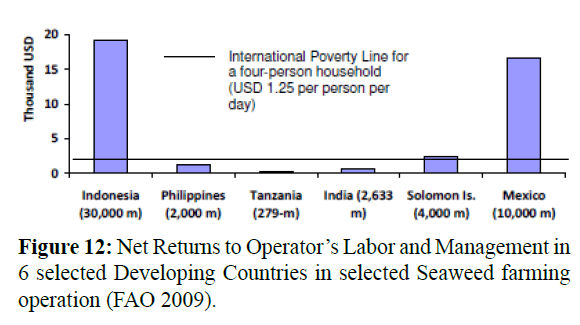
Figure 12: Net Returns to Operator’s Labor and Management in 6 selected Developing Countries in selected Seaweed farming operation (FAO 2009).
Ultimately, based on these fundamental data we can already calculate the “carrying capacity” of planet Earth and as a rough indicator its possibility to feed ≈ “Ten Billion People at the Midst of the 21st Century”. In all, photosynthetic organisms convert around 100-115 Peta-grams (1015 grams) of carbon into biomass per year with a “mean” solar irradiance.=> Calculation: Presently 100 x 1015 grams of carbon/year fixed by photosynthetic organisms which is equivalent to 4 x 1018 kJ/yr = 4 x 1021 J/yr of free energy stored as reduced carbon; (4 x 1018 kJ/yr) / (31,556,900 sec/yr) = 1.27 x 1014 J/yr; (1.27 x 1014 J/yr) / (1012 J/sec / TW) = 127 TW ≈(127 * 1012 Joule/sec).
Three approaches to produce 70% more green biomass amounting 70 x 1012 kg of carbon per annum can be followed:
a). Land-based along the coastline of the Sahara desert:
Data on the amount of energy reaching the Earth’s outer atmosphere and penetrating to the surface have been available for many years. A recent re-evaluation has provided information by which insolation at any point on the Earth can be modelled to yield annual, seasonal, and daily values. Despite decadal variation, the annual value of total solar energy received at the Earth’s surface is ≈2,500,000 exajoules (EJ). Ignoring the near infra-red wavelengths that are not available to photosynthesis, we have approximately 2,200,000 EJ of the available energy per year. On the basis of the earth’s surface area of ≈510,000,000 km2 of which ¾ is ocean amounting ≈ 382,500,000 km2 and around ¼ is terrestrial area amounting ≈ 127,500,000 km2. For this remaining land area, 13.32% is arable and ≈14% is real desert. This is a tremendous area of 17.9 million km2 desert area (see Figure 13) at present unusable for terrestrial agriculture.
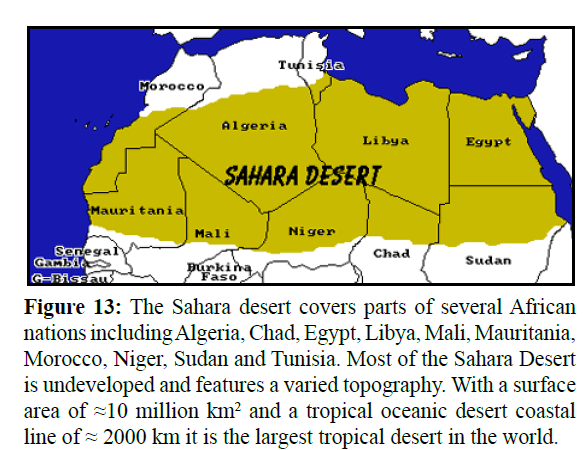
Figure 13: The Sahara desert covers parts of several African nations including Algeria, Chad, Egypt, Libya, Mali, Mauritania, Morocco, Niger, Sudan and Tunisia. Most of the Sahara Desert is undeveloped and features a varied topography. With a surface area of ≈10 million km2 and a tropical oceanic desert coastal line of ≈ 2000 km it is the largest tropical desert in the world.
From Table 2 we can see that the annual Ulva sp. Seaweed biomass production amounts ≈100 (tonnes wet weight ha-1 year- 1)=> so with a western Sahara coastline of 2000 km => an estimated annual biomass yield of )=> 20 Giga kg (G=109) {1 tonnes=1000 kg with an amount of 80% water estimated biomass (wet weight) production per year }=> 4 *1012 kg ha-1 year-1 of dry weight green biomass can produced which is solely 1.15 % of the required global 70% by FAO (2009) & Foresight (2011) required increase of 70% green biomass. However, it need to be stated China’s coastline covers approximately 14,500 km (around 9,010 mi) from the Bohai gulf on the north to the Gulf of Tonkin on the south and that along the coast concentrated around 4 specific regions (see Figure 14), world leader China in the seaweed industry succeeds to produce, so in quantity the Chinese seaweed industry amounts ≈10.25 billion kg of seaweed or green biomass/dry matter/annum. A tremendous seaweed industry developed in ample fifty years!!
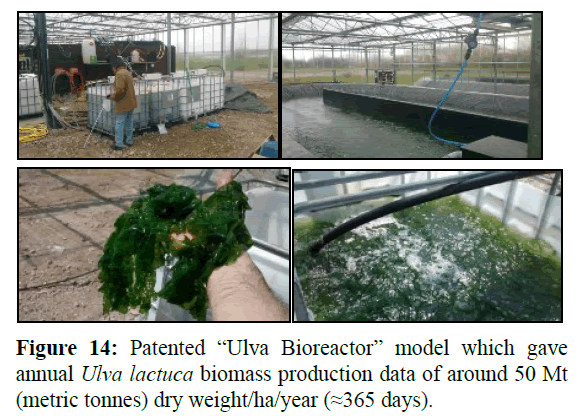
Figure 14: Patented “Ulva Bioreactor” model which gave annual Ulva lactuca biomass production data of around 50 Mt (metric tonnes) dry weight/ha/year (≈365 days).
b): However, a smart innovative “Blue-green” technology patented “Ulva Bioreactor” systems:
Our patented “Ulva Bioreactor” model gave annual Ulva lactuca biomass production data of around 50 Mt (metric tonnes) dry weight/ha/year (≈365 days), which corresponds in large extent to the green Ulva biomass yields reported by Danish researchers of Annette Bruhn and coworkers. (Figure 15).
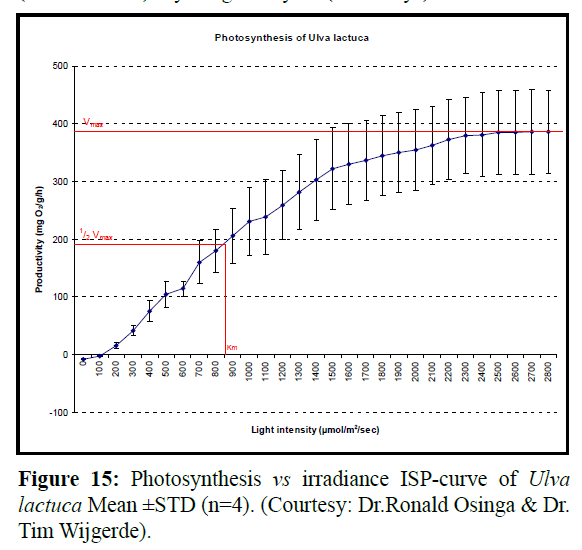
Figure 15: Photosynthesis vs irradiance ISP-curve of Ulva lactuca Mean ±STD (n=4). (Courtesy: Dr.Ronald Osinga & Dr. Tim Wijgerde).
From “principle of proof” laboratory experiments creating ISP-curves for Ulva lactuca from the Atlantic it is demonstrated in photosynthetic ISP-curves the highest photosynthetic rate – without photoinhibition- is reached at a maximal Solar Irradiance at planet Earth of ≈2800 [μmol/m2/sec] which is the case in the Sahara desert (Figure 1).
These observations needs on an annual basis be confirmed at local field stations in the Sahara region for which the Blue-Green technologies foundation intends to cooperate with the Senegalese government and EU partners or another option would be a local field station in Benin with another partner. We are mainly focused on the African continent with its large potential for a “booming seaweed industry” accompanied with economic growth. Other criteria were based on raised concern because at present: a). The African continent contains countries/regions with the lowest GDP and b). Lowest “Maximum Life-Span” (MLS) of around 50 years all developing countries; c). Together with the highest mortality rate among the population due to acute chronic “hunger-stress” and ”plagues of famine”. In order to produce the required 70% more green biomass for “the global ten billion people issue” at the midst of the 21st century this amounts to:
=> 70 x 1012 kg of carbon per annum or an annual dry weight seaweed production of 350 x 1012 kg (≈350 x 109 Mt_or around 350 billion (1012) kg of dry weight green biomass of seaweed needs on a global scale to be produced in order to solve “The global Ten Billion People Issue”.
It can be concluded we have to produce 70% more green biomass amounting 70 x 1012 kg of carbon per annum. Assuming a moisture content of 80% and a fixed “Seaweed Redfield Constant” or C:N:P ratio of 550:30:1 (i.e., C:N =18:1 and N:P=30:1 -which makes the general calculation as fundament “Towards a Seaweed based Economy” seaweed species independent in the eutrophic oceans with in general terms no P or N “fertilizer” restrictions. Hence, an annual dry weight seaweed production of 350 x 1012 kg or around 350 billion kg of dry weight green biomass of seaweed needs on a global scale to be produced in order to solve “The global Ten Billion People Issue”. In comparison the Chinese seaweed industry -which at present covers≈ 90% of the global seaweed production- produces ≈10.25 billion kg of dry weight seaweed per year which is around 35 times a lower amount of green biomass as the required 350 billion kg of dry weight green biomass of seaweed needs on a global scale to be produced in order to solve “The global Ten Billion People Issue”.
=>To state it simply: we have to copy the Chinese seaweed industry towards the African continent and multiply this with 35.
If our “Blue-green” technology patented “Ulva Bioreactor” systems with annual Ulva lactuca biomass production data of around 50 Mt (metric tonnes with 1 MT ≈ 1,016 kg≈1,000 kg) dry weight/ha/year (≈365 days) or 7 x 109 ha Sahara desert would be required (1 square kilometer = 100 ha) =70 million square kilometer should be covered which is around 70% part of the whole Sahara area of ≈10 million km2. This is an unrealistic option and therefore we stipulated that a seaweed based economy could assist the staggering terrestrial agricultural systems. However if this technique can be implemented in the tropical deserts covering our planet with an oceanic coastline like in Australia or South- America or the US (California) (Figure 16), a tremendous amount of green Ulva sp. biomass can be produced.
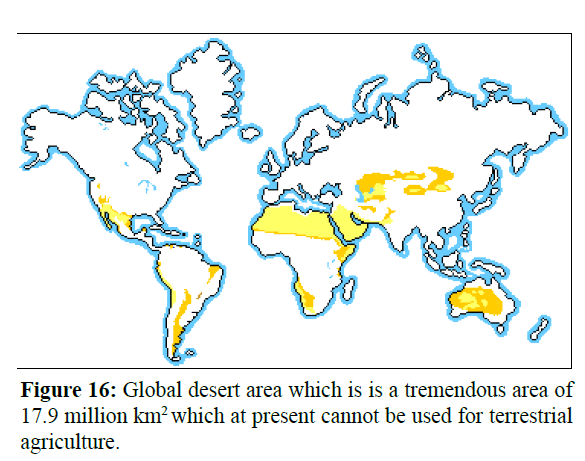
Figure 16: Global desert area which is is a tremendous area of 17.9 million km2 which at present cannot be used for terrestrial agriculture.
c). Sea-based: Kelp communities in the coastal zones:
Perhaps surprisingly, on a cloudless day, the temperate zones offer good levels of solar energy, even though the season is shorter. So these areas -with presently an expanding Kelp seaweed industry cultured on ropes can also contribute to the required 70% increase in green biomass. (Figure 17).
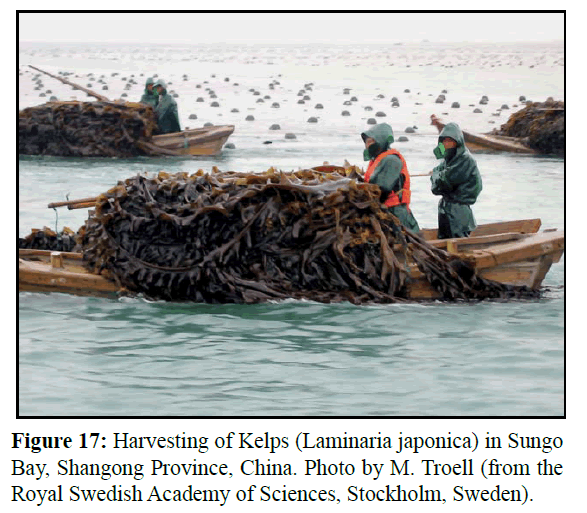
Figure 17: Harvesting of Kelps (Laminaria japonica) in Sungo Bay, Shangong Province, China. Photo by M. Troell (from the Royal Swedish Academy of Sciences, Stockholm, Sweden).
It can be concluded that mainly Kelp-(Laminaria) seaweed communities in the temperate oceanic zones (≈ 20° C) have the highest primary productivity around 1000 (g C/m2/year). For the Kelp species (Laminaria sp. & Ascophyllum sp.), this can be explained as follows: although at low light intensities photosynthesis is almost independent of temperature, at high light intensities photosynthesis, as well as respiration, are strongly controlled by temperature. In this way, a seasonal adaptation of respiration occurs: with decreasing temperature, respiration declines faster than photosynthesis. In summer and autumn, an intensive photosynthesis enables storage of carbohydrates, which are used for growth in winter and spring. A long day-length in summer, at high latitudes, compensates for low light intensities. Besides the algae, photosynthesis is saturated at a light level of about one-third of full sunlight. In winter and spring, circumstances are favorable for growth, because high nutrient concentrations are available due to low plankton concentrations, and a high light transmission occurs in the water column. No influences of geographic latitude on kelp production have been found. As mentioned earlier we have to produce 70% more green biomass amounting 70 x 1012 kg of carbon per annum relying on oceanic Kelp production we can give the following calculation. If we consider to perform this on our oceans via Kelp production which has the highest primary productivity around 1 (kg C/m2/year) we need on a global scale a kelp seaweed plantation of around 70 x 1012 m2 (with 1,000,000 square meter is one square kilometre) => 70 x 106 km2. On the basis of the earth’s surface area of ≈510 x 106 km2 of which ¾ is ocean amounting ≈ 383 x 106 km2. So if we solely chose to dissolve the tremendous amount 70% increase of green biomass via oceanic kelp farming we need to cover 18.3% of our oceans with Kelp which might be a realistic option for total seaweed based economy.
Conclusion
We have earlier demonstrated that all ingredients for a global booming seaweed industry are available:
a). More than abundant solar energy;
b). Fertilizer in our eutrophic oceans;
c). Suitable seaweed strains for culture were selected by frontrunner China with a booming seaweed industry developed after the midst of the 20st century yielding presently amounts ≈10.25 billion kg of seaweed or green biomass/ dry matter/annum;
d). Tremendous empirical knowledge about seaweed cultivation techniques (review in preparation) mainly in China and the last decade an tremendous amount of scientific work at seaweed species on all kind of research topics which can be demonstrated for e.g. the green seaweed Ulva fasciata in Figure 18.
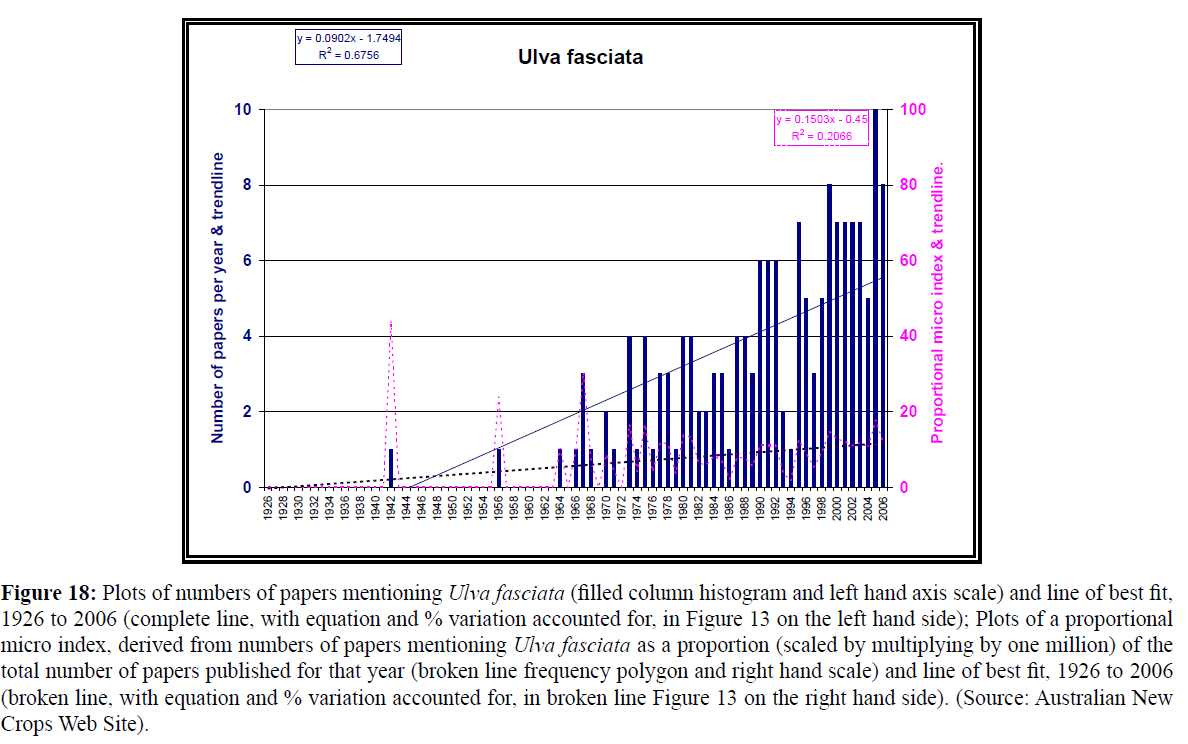
Figure 18: Plots of numbers of papers mentioning Ulva fasciata (filled column histogram and left hand axis scale) and line of best fit, 1926 to 2006 (complete line, with equation and % variation accounted for, in Figure 13 on the left hand side); Plots of a proportional micro index, derived from numbers of papers mentioning Ulva fasciata as a proportion (scaled by multiplying by one million) of the total number of papers published for that year (broken line frequency polygon and right hand scale) and line of best fit, 1926 to 2006 (broken line, with equation and % variation accounted for, in broken line Figure 13 on the right hand side). (Source: Australian New Crops Web Site).
Perspectives
So it has to be feasible and realistic by applying smart innovative blue green technologies ideas (www.bluegreentechnologies. nl), in combination with a status quo of our present terrestrial agricultural system (FAO 2009, Foresight 2011), that a seaweed based economy (desert-, land-based & oceanic based) can assist to provide “the global ten billion people issue” at the midst of the 21st century their primary needs with an increase of around 70% of green biomass to a major extent to focus the next three decades on a booming seaweed industry which will deliver humanity a plethora of new applications in the field of agriculture, medicine, energy, biotechnology etc. Requirements humanity needs not only this 21st century but also far beyond.
Acknowledgements
References are known by the authors and will be followed up in a review manuscript. This compelling and urgent work presented as commentary in order to and share knowledge with the “International Scientific Community” was totally funded in hours and free labor-work by the founders of the “Blue Green Technology Foundation”, the Netherlands, (www.bluegreentechnologies. nl). Furthermore, we are thankful for the Editor in Chief Dr. Florence of Journal of Fish and Fisheries to give a loyal “payment arrangement” in the Manuscript Processing Costs (MPCs).
8565


























